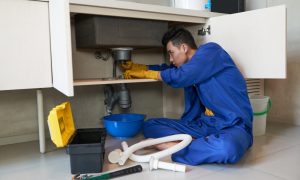Is Replacing a Shower Valve Difficult?

Replacing a shower valve can be moderately challenging, but with the right tools, preparation, and some DIY knowledge, it is a manageable project. However, certain situations may require professional assistance.
Understanding Shower Valves
A shower valve is an essential component of your shower system. It controls the water flow and temperature, ensuring a consistent and comfortable shower experience. Over time, shower valves can wear out or become faulty, necessitating a replacement. Modernizing your bathroom with new shower valves can also elevate your space. For more on this, read Elevate Your Bathroom: How Shower Valves Modernize Your Space at Tapron UK.
When to Replace a Shower Valve
You might need to replace your shower valve if you experience any of the following issues:
- Leaking: Water leaks from the showerhead even when the valve is turned off.
- Temperature Fluctuations: Difficulty in maintaining a steady water temperature.
- Reduced Water Pressure: Noticeable drop in water pressure.
- Non-responsive Controls: The valve handle is hard to turn or doesn’t control the water flow effectively.
Tools and Materials Needed
Before starting the replacement, gather the following tools and materials:
- New shower valve
- Adjustable wrench
- Screwdrivers (Phillips and flathead)
- Pipe wrench
- Plumber’s tape
- Utility knife
- Plumber’s grease
- Soldering kit (if needed for copper pipes)
- Bucket
- Towel
Steps to Replace a Shower Valve
- Turn Off the Water Supply
The first step in replacing a shower valve is to turn off the water supply to the shower. This can typically be done by turning off the main water supply to your home. Open the shower valve to drain any remaining water in the pipes.
- Identify and Access the Shower Valve
Identifying your shower valve type is crucial before starting the replacement process. Different valves require different approaches. For a detailed guide, refer to Identifying Your Shower Valve: A Guide for Homeowners At Tapron Ireland . Accessing the shower valve usually involves removing the handle and trim plate. Use a screwdriver to remove the screws holding the handle and trim plate in place. Keep these parts in a safe place as you may need them later.
- Remove the Old Valve
Once you have access to the valve, you will need to disconnect the water supply lines. This might require using an adjustable wrench or pipe wrench. Be prepared to catch any remaining water in a bucket. Carefully remove the old valve from its housing.
- Prepare the New Valve
Before installing the new valve, wrap the threads of the valve with plumber’s tape to ensure a tight seal. Apply plumber’s grease to the O-rings and any moving parts to prevent leaks and ensure smooth operation.
- Install the New Valve
Position the new valve in place and reconnect the water supply lines. Tighten the connections securely but avoid over-tightening, which can cause damage. Ensure that the valve is correctly aligned and securely attached.
- Test for Leaks
Before closing up the wall, turn on the water supply and test the new valve for leaks. If there are no leaks, and the valve operates smoothly, you can proceed to the next step. If you notice any leaks, tighten the connections or reapply plumber’s tape as needed.
- Reassemble the Trim and Handle
Once you’re confident that there are no leaks, reattach the trim plate and handle. Make sure all screws are securely fastened and the handle operates the valve correctly.
- Seal the Wall
If you had to cut into the wall to access the valve, patch up the wall using appropriate materials. This might involve replacing tiles, drywall, or any other wall coverings. Ensure the area is sealed properly to prevent water damage.
Shower Valve Care
Proper care and maintenance of your shower valve can extend its life and ensure it continues to function smoothly. Regular cleaning and inspections can help prevent issues. For more information, refer to Shower Valve Care: A Guide for Bathrooms at Gold Bathroom UK.
When to Call a Professional
While many DIY enthusiasts can replace a shower valve, there are situations where it’s best to call a professional plumber:
- Complex Plumbing Systems: If your home has a complex plumbing system or if the valve is difficult to access.
- Soldering Required: If the replacement involves soldering copper pipes and you’re not comfortable with this process.
- Persistent Issues: If you’ve replaced the valve and still experience problems, a professional can diagnose and fix the issue.
Conclusion
Replacing a shower valve is a moderately challenging DIY project that requires some plumbing knowledge and the right tools. By following the steps outlined in this guide, you can replace a faulty shower valve and restore your shower to optimal working condition. However, if the task seems too complicated or if you encounter any issues, it’s best to seek the help of a professional plumber.
Modernizing your bathroom with a new shower valve can also add a touch of elegance and improve functionality. For a deeper dive into the benefits and identification of shower valves, explore the provided links.





